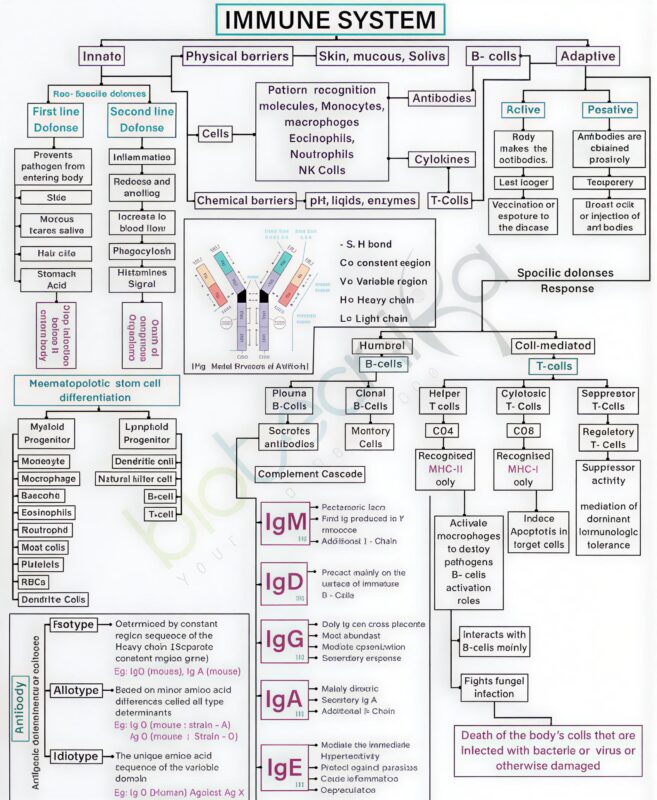
William Wallace: Your Immune System Doesn’t only Defend, it Remembers
William Wallace, Founder and Director of Product Development and Scientific Affairs, posted on LinkedIn:
”Your immune system doesn’t only defend, it remembers
This diagram maps how the body’s innate and adaptive immune systems work together to identify, attack, and remember pathogens. It shows how different immune cells, antibodies, and signaling molecules coordinate to protect against infection while maintaining balance.
1. Innate immunity: the immediate response
The innate system acts within minutes, providing broad defense through physical, chemical, and cellular barriers.
– Example: Skin, mucus, and stomach acid block pathogens, while macrophages, neutrophils, and natural killer cells identify and destroy invaders using pattern-recognition receptors.
– Example: The complement cascade amplifies inflammation and flags pathogens for destruction by immune cells.
2. Adaptive immunity: the targeted response
The adaptive system learns to recognize specific antigens and produces lasting protection through specialized B and T cells.
– Example: B cells release antibodies (IgM, IgG, IgA, IgE, IgD) that neutralize toxins and tag microbes for clearance.
– Example: T cells coordinate and execute defense-helper T cells activate macrophages and B cells, while cytotoxic T cells trigger apoptosis in infected cells.
3. Antibody specialization and immune memory
Each antibody class has a unique role in defense and long-term immunity.
– Example: IgM is the first antibody made in infection, IgG provides long-term protection and crosses the placenta, IgA guards mucosal surfaces, and IgE mediates allergic reactions.
– Example: Memory B and T cells remain after infection or vaccination, allowing faster and stronger immune responses upon re-exposure.
4. Active and passive protection
Immunity can be acquired through natural infection, vaccination, or temporary antibody transfer.
– Example: maternal antibodies passed through breast milk provide short-term passive defense.
The immune system’s strength lies in its coordination—an instant, non-specific response that buys time for a targeted, adaptive defense that remembers what it has seen.”

Stay informed with Hemostasis Today.
-
Nov 19, 2025, 18:03Andres Ricaurte Fajardo on a Strongyloides Stercoralis Hyperinfection with Thrombosis
-
Nov 19, 2025, 17:50Marilena Vrana Reflects on PPTA Europe’s Visits with Members and Stakeholders in 2025
-
Nov 19, 2025, 17:32Michael Makris Shares Insights from Global Forum Meeting of the WFH Meeting in Montreal
-
Nov 19, 2025, 17:14Yazan Abou Ismail Takes The Legacy Award from Qatar Foundation
-
Nov 19, 2025, 17:02Wolfgang Miesbach Shares Real-World Evidence on Eptacog Beta from Spain
-
Nov 19, 2025, 16:34Ishita Singh Reflects on Haematocon 2025: A Reminder of Her Commitment to The Journey
-
Nov 19, 2025, 16:23Mehdi Kashani: I’m Really Excited to Share Schistosite.com
-
Nov 19, 2025, 16:09A ”Meow-cyte” from Melaku Abay Muluneh or Why Microscopy Never Gets Old!
-
Nov 19, 2025, 15:56Cuilan Li on her Contribution to a Cutting-Edge Project in Polycythemia Vera
